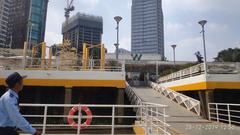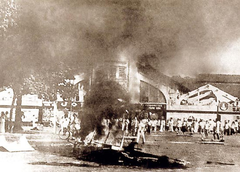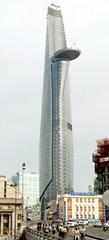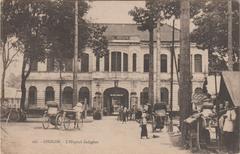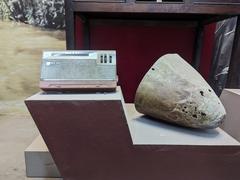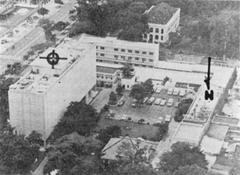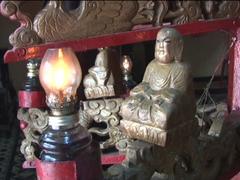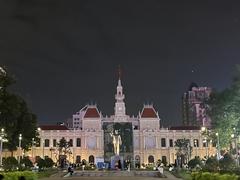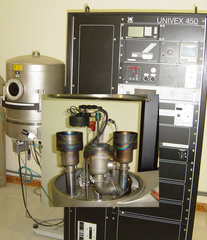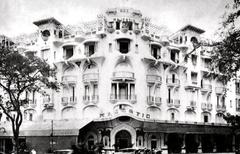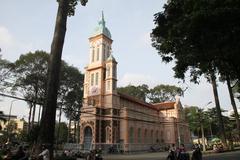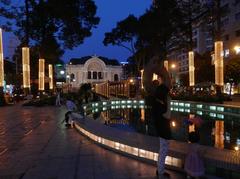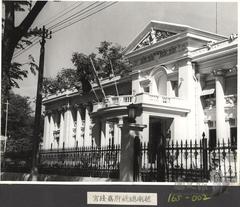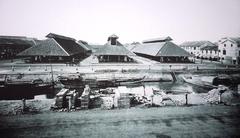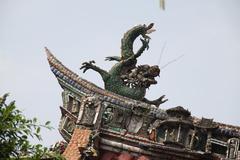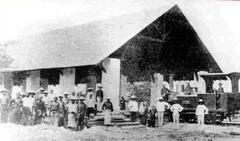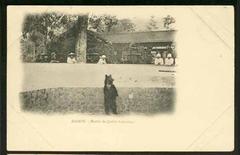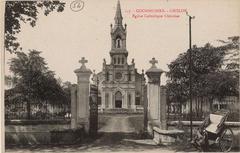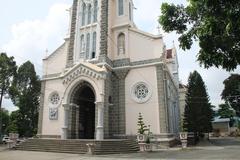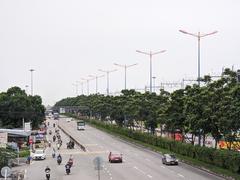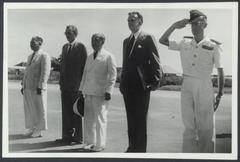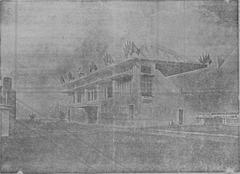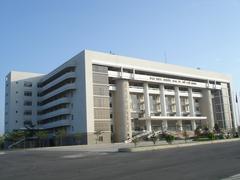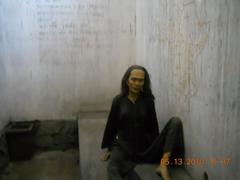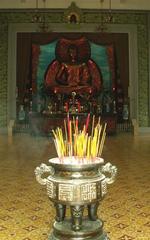Visiting Hours, Tickets, and Historical Sites of Van Hanh Monastery, Ho Chi Minh City
Date: 24/07/2024
Introduction
Vạn Hạnh Monastery, located at 716 Nguyễn Kiệm Street in Ho Chi Minh City, stands as a beacon of Buddhist education and practice in Vietnam. This revered Zen Buddhist temple, with its rich history and significant contributions to Buddhist scholarship, attracts visitors from around the globe. Originally the campus for the School of Applied Science of Vạn Hạnh Buddhist University before the fall of Saigon in 1975, the site has undergone remarkable transformations (Everything Explained). Today, it serves as a Zen meditation temple and a research center, offering a unique blend of spiritual, cultural, and educational experiences. This comprehensive guide aims to provide an in-depth look into the monastery’s history, visitor information, travel tips, nearby attractions, and more, making it an essential read for anyone planning to visit this iconic landmark.
Table of Contents
- Introduction
- History of Vạn Hạnh Monastery
- Visitor Information
- Travel Tips
- Nearby Attractions
- Special Events
- Conclusion
- FAQ
History of Vạn Hạnh Monastery
Origins and Early Development
Originally serving as the campus for the School of Applied Science of Vạn Hạnh Buddhist University before the fall of Saigon in 1975, Vạn Hạnh Monastery has undergone significant transformations. Under the leadership of Thích Minh Châu, the university played a crucial role in Buddhist education and research.
Transformation Post-1975
Following the reunification of Vietnam in 1976, the campus was converted into a Zen meditation temple and a Buddhist research center, marking a significant shift in its purpose.
Architectural Evolution
The main ceremonial hall, built in 1990, follows the architectural model of Buddhist temples in Huế. This two-storied structure features a ground floor that serves as the main ceremonial hall, housing a white statue of Gautama Buddha seated on a lotus. The upper storey contains the guest room and the office of the abbot.
Educational and Research Contributions
Vạn Hạnh Monastery hosts the Vietnamese Buddhist Research Institute, which is divided into several departments focusing on Vietnamese Buddhism, world Buddhism, and the translation of Mahayana sutras from Chinese into Vietnamese. The institute also translates the Pali Canon, contributing significantly to the preservation and dissemination of Buddhist teachings.
Training of Buddhist Monks
The monastery offers a four-year course equivalent to a university degree, accepting monks and nuns through an examination process. Since 1984, it has trained more than 400 members of the sangha, making it a cornerstone of Buddhist education in southern Vietnam.
Role in Vietnamese Buddhism
Vạn Hạnh Monastery holds a significant place in Vietnamese Buddhism. It regularly welcomes international Buddhist delegations and other foreign visitors. Devotees from across the country come to celebrate Buddha’s birthday and participate in preaching sessions.
The Patriarch Hall
This two-storied building has an upper storey dedicated to paying homage to the Buddha and the patriarchs, including Thích Tịnh Khiết. The ground floor serves as the dharma hall, where dharma talks are held.
Modern-Day Significance
Today, Vạn Hạnh Monastery continues to be a beacon of Buddhist learning and practice. It serves as the main Buddhist training center in Vietnam, providing a comprehensive education to the sangha. The monastery’s library, which stocks a large range of religious documents, is a valuable resource for both monks and laypeople interested in Buddhist studies.
Cultural and Religious Impact
The monastery’s impact extends beyond education and research. It plays a crucial role in the cultural and religious life of the local community. The imposing Tam Quan (three-entrance gate), the main court hall, and other facilities make it a significant landmark in Ho Chi Minh City.
Visitor Information
Visiting Hours
Vạn Hạnh Monastery is open to visitors daily from 6:00 AM to 8:00 PM.
Tickets
There is no entrance fee to visit Vạn Hạnh Monastery; however, donations are welcome.
Accessibility
The monastery is accessible to individuals with disabilities, with ramps and accessible pathways available.
Travel Tips
- Best Time to Visit: Early mornings or late afternoons for a serene experience.
- Dress Code: Modest attire is recommended. Shoulders and knees should be covered.
- Photography: Allowed in most areas but be respectful in sacred spaces.
Nearby Attractions
- Jade Emperor Pagoda: Another significant Buddhist site located nearby.
- War Remnants Museum: Offers historical context about Vietnam’s past.
- Ben Thanh Market: A bustling market great for souvenirs.
Special Events
- Buddha’s Birthday Celebrations: A major event drawing large crowds.
- Dharma Talks: Regularly scheduled and open to the public.
Conclusion
Vạn Hạnh Monastery’s rich history and ongoing contributions to Buddhist education and practice make it a vital institution in Vietnam. Its transformation from a university campus to a Zen meditation temple and research center reflects its adaptability and enduring significance in the Buddhist community. The monastery’s architectural beauty, educational programs, and cultural impact ensure its place as a cornerstone of Vietnamese Buddhism.
FAQ
What are the visiting hours for Vạn Hạnh Monastery?
The monastery is open daily from 6:00 AM to 8:00 PM.
How much are tickets to Vạn Hạnh Monastery?
There is no entrance fee, but donations are welcome.
What can you see at Vạn Hạnh Monastery?
Visitors can explore the main ceremonial hall, the Patriarch Hall, and the library, among other areas.
Is Vạn Hạnh Monastery accessible for individuals with disabilities?
Yes, the monastery has ramps and accessible pathways.
